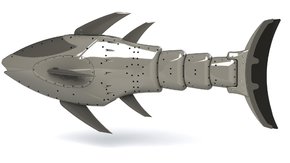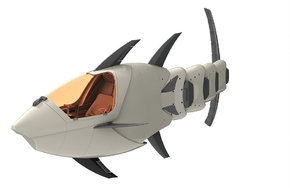Hi, My Name is Rebwar and im new to this community.
Im working on a prototype i want to introduce into the arena of sub-sea warfare.
At the moment im looking for feed back, especially if you are currently serving or have served in the Navy.
The BR100 average cost to build is $40 – $60 000 USD, which is less than most of the competitors. The BR1000 will have a much cheaper and costeffective price than other competitors within the same category and market. The average cost to build BR1000 will be around $400 – $500 000 USD.
Submarine cost: Astute SSN (UK)-$2,410 million, Gotland SSK (Sweden)$365 million
Aircraft Carrier cost: CVN-78 Gerald R Ford-$13.5 billion, Queen Elizabeth (UK)-$3.7 billion Cruiser/Destroyer cost: DDG 51 Arleigh Burke-$1.8 billion, Daring Type 45 (UK)-$976 million
The average cost of Naval Vessels and Vehicles are not less than $50 MILLION USD, excluded the operational spending.
One BR100 or BR1000 with an average cost to build $30 000 – $500 000 USD, can inflict and destroy billion dollars’ worth of resources. BR1000 and BR100 will move like a fish and it will be as stealthy as a fish. It is agile and fast so it can avoid detection and it can also access and deny access. Depending on the nature of the mission and operation it can easily adapt and overcome any challenges previously existed within the Underwater operations/missions.
Special Operation Units can access behind enemy lines to conduct surveillance, transportation, spying and time critical strikes.
There are many applications for BR100 & BR1000 for NAVAL operations.
• Anti-submarine warfare
• Communication
• Detection of vessels
• Emitting jamming
• False data transmission
• Identification
• Information operations
• Inspection
• Mine detection
• Mine neutralization
• Navigation
• Oceanography
• Overall support of military vessels and ports (offense and defense)
• Reconnaissance
• Seafloor mapping
• Spying (Sonar, Sensors, Radar)
• Surveillance
• Time critical strikes
• Transportation
• Special operation units
BR100

Vehicle Width: 0.446m
Vehicle Length: 1.504m
Weight: 35 -40 kg, Subjected to equipment
Operation Depth: 100m – Product testing
Energy: Undisclosed
Endurance: Mission duration +6 hour, subjected to speed and sensor configuration
Propulsion: Aquatic locomotion
Velocity Range: 20knots
Control: Undisclosed
On/off: Mechanical switch
Navigation: Undisclosed
Tracking: Undisclosed
Communication: Undisclosed
Sensors: Undisclosed
Software: Undisclosed
Classification: Autonomous Underwater Vehicle (AUV), Remotely Operated Vehicle (ROV), Multipurpose Underwater Vehicle (MUV)
BR1000

Vehicle Width: 1.538m
Vehicle Length: 5.396m
Weight: Undisclosed
Operation Depth: 100m – Product testing
Energy: Undisclosed
Endurance: Mission duration +6 hour, subjected to speed and sensor configuration
Propulsion: Aquatic locomotion
Velocity Range: 20knots
Control: Undisclosed
On/off: Mechanical switch
Navigation: Undisclosed
Tracking: Undisclosed
Communication: Undisclosed
Sensors: Undisclosed
Software: Undisclosed
Classification: Unmanned Underwater Vehicle (UUV), Autonomous Underwater Vehicle (AUV), Multipurpose Manned Submersible Vehicle (MMSV), Remotely Operated Vehicle (ROV).
BR1000 can carry 1 pilot, later models will accommodate passengers and larger payload capacity
What do you think of the future of naval warfare?
Are we moving into a new era of submersible technological advancement?
What applications do you see for BR100 and BR1000 ?
What do you think of the project ?
If you want to give me an official feedback i can use, please send me your mail and i will send you my product description.
Im working on a prototype i want to introduce into the arena of sub-sea warfare.
At the moment im looking for feed back, especially if you are currently serving or have served in the Navy.
The BR100 average cost to build is $40 – $60 000 USD, which is less than most of the competitors. The BR1000 will have a much cheaper and costeffective price than other competitors within the same category and market. The average cost to build BR1000 will be around $400 – $500 000 USD.
Submarine cost: Astute SSN (UK)-$2,410 million, Gotland SSK (Sweden)$365 million
Aircraft Carrier cost: CVN-78 Gerald R Ford-$13.5 billion, Queen Elizabeth (UK)-$3.7 billion Cruiser/Destroyer cost: DDG 51 Arleigh Burke-$1.8 billion, Daring Type 45 (UK)-$976 million
The average cost of Naval Vessels and Vehicles are not less than $50 MILLION USD, excluded the operational spending.
One BR100 or BR1000 with an average cost to build $30 000 – $500 000 USD, can inflict and destroy billion dollars’ worth of resources. BR1000 and BR100 will move like a fish and it will be as stealthy as a fish. It is agile and fast so it can avoid detection and it can also access and deny access. Depending on the nature of the mission and operation it can easily adapt and overcome any challenges previously existed within the Underwater operations/missions.
Special Operation Units can access behind enemy lines to conduct surveillance, transportation, spying and time critical strikes.
There are many applications for BR100 & BR1000 for NAVAL operations.
• Anti-submarine warfare
• Communication
• Detection of vessels
• Emitting jamming
• False data transmission
• Identification
• Information operations
• Inspection
• Mine detection
• Mine neutralization
• Navigation
• Oceanography
• Overall support of military vessels and ports (offense and defense)
• Reconnaissance
• Seafloor mapping
• Spying (Sonar, Sensors, Radar)
• Surveillance
• Time critical strikes
• Transportation
• Special operation units
BR100

Vehicle Width: 0.446m
Vehicle Length: 1.504m
Weight: 35 -40 kg, Subjected to equipment
Operation Depth: 100m – Product testing
Energy: Undisclosed
Endurance: Mission duration +6 hour, subjected to speed and sensor configuration
Propulsion: Aquatic locomotion
Velocity Range: 20knots
Control: Undisclosed
On/off: Mechanical switch
Navigation: Undisclosed
Tracking: Undisclosed
Communication: Undisclosed
Sensors: Undisclosed
Software: Undisclosed
Classification: Autonomous Underwater Vehicle (AUV), Remotely Operated Vehicle (ROV), Multipurpose Underwater Vehicle (MUV)
BR1000

Vehicle Width: 1.538m
Vehicle Length: 5.396m
Weight: Undisclosed
Operation Depth: 100m – Product testing
Energy: Undisclosed
Endurance: Mission duration +6 hour, subjected to speed and sensor configuration
Propulsion: Aquatic locomotion
Velocity Range: 20knots
Control: Undisclosed
On/off: Mechanical switch
Navigation: Undisclosed
Tracking: Undisclosed
Communication: Undisclosed
Sensors: Undisclosed
Software: Undisclosed
Classification: Unmanned Underwater Vehicle (UUV), Autonomous Underwater Vehicle (AUV), Multipurpose Manned Submersible Vehicle (MMSV), Remotely Operated Vehicle (ROV).
BR1000 can carry 1 pilot, later models will accommodate passengers and larger payload capacity
What do you think of the future of naval warfare?
Are we moving into a new era of submersible technological advancement?
What applications do you see for BR100 and BR1000 ?
What do you think of the project ?
If you want to give me an official feedback i can use, please send me your mail and i will send you my product description.
Last edited:
